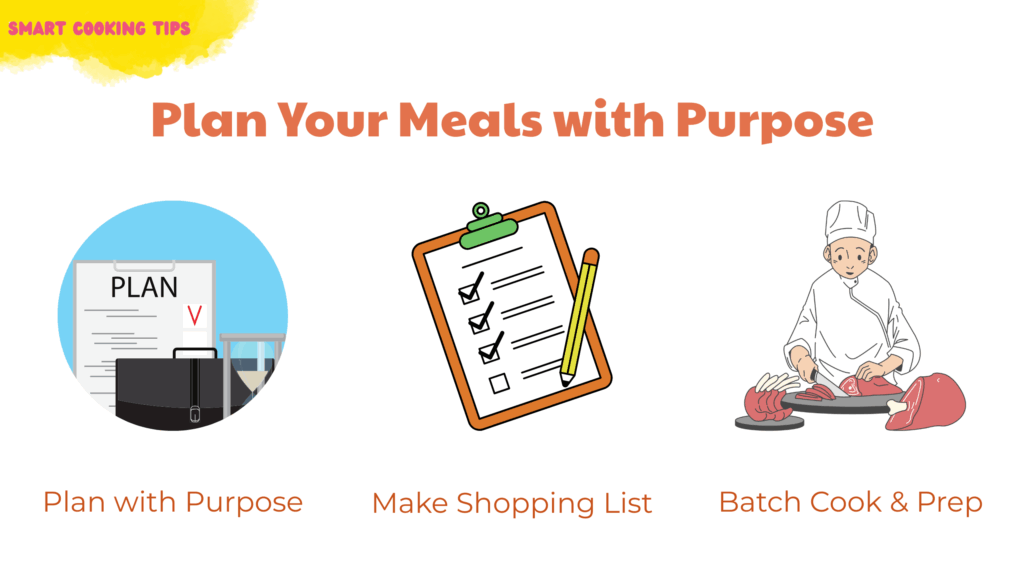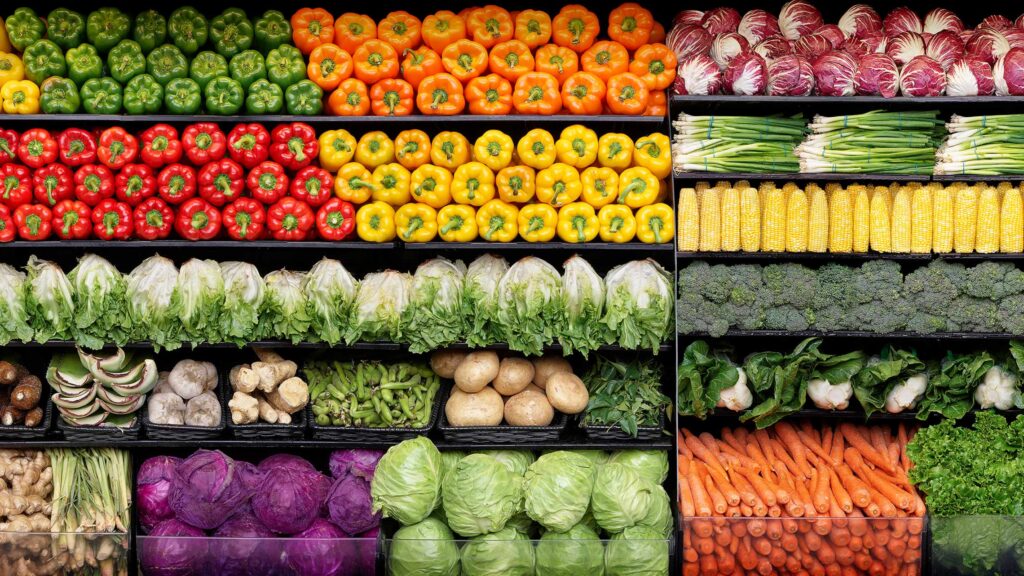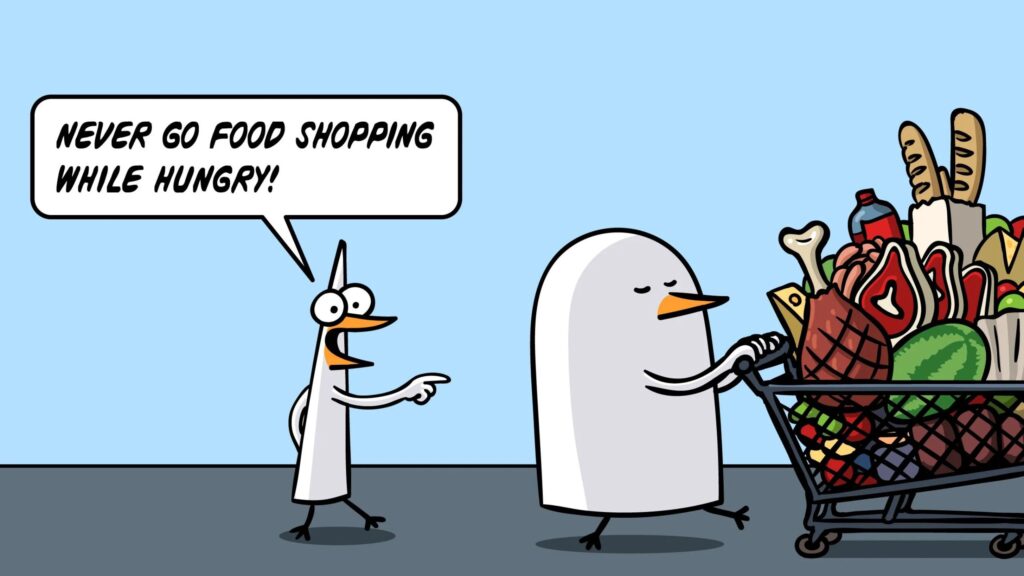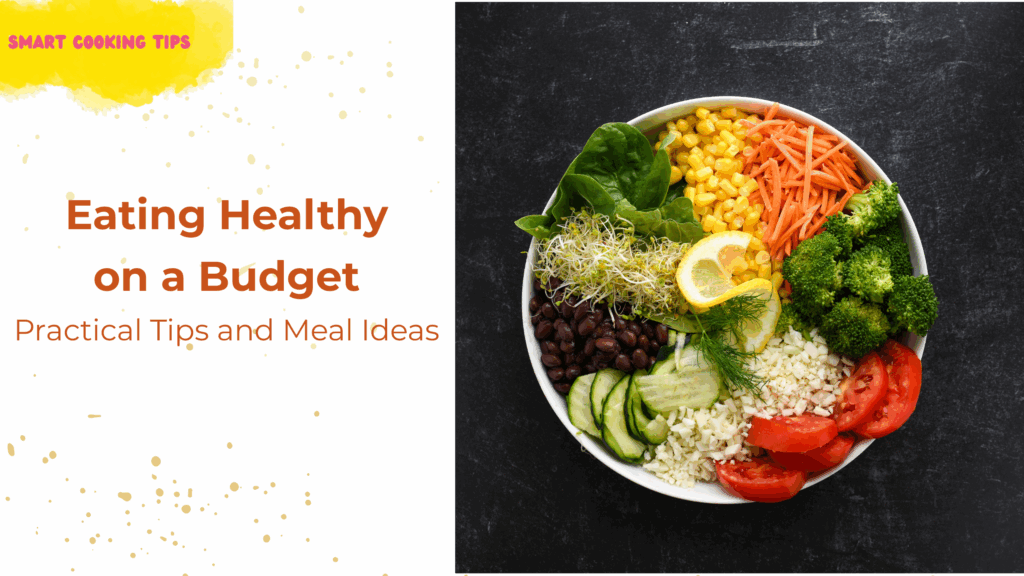Eating healthy on a budget is easier than many people think. With food prices rising, it’s natural to worry about costs, but nutritious meals don’t have to break the bank. By planning carefully, shopping smart, and cooking at home, you can enjoy wholesome, delicious food while saving money. This guide offers practical tips, simple recipes, and budget-friendly strategies that work for individuals, families, or anyone looking to eat well without overspending. Whether you’re new to healthy cooking or looking to cut costs, these easy steps will help you eat healthy on a budget with confidence.
Why Eating Healthy on a Budget Is Important

Eating healthy on a budget has multiple benefits beyond just saving money. Nutritious meals support your overall health, energy, and well-being while reducing the risk of chronic illnesses such as diabetes and heart disease. Many people think that eating healthy on a budget means sacrificing taste or quality, but that’s a myth. With the right approach, you can prepare delicious, wholesome meals that won’t strain your finances.
By focusing on eating healthy on a budget, you also reduce food waste and gain better control over your nutrition. This lifestyle supports sustainable habits that benefit both your body and your wallet. In this blog, you’ll learn how to plan, shop, cook, and store food efficiently, turning healthy eating on a budget into a practical and enjoyable routine.
1. Plan Your Meals with Purpose

Plan with Purpose: Planning is the foundation of eating healthy on a budget. Start by creating a weekly meal plan that matches your budget and lifestyle. Choose meals that use similar ingredients so you can buy in bulk and reduce waste. For example, if you plan a rice and bean stir-fry one night, use leftover rice for a vegetable fried rice the next day.
Make Shopping List: Next, make a shopping list based on your meal plan, focusing on store sales and seasonal produce. Seasonal fruits and vegetables are usually cheaper and fresher. Planning also helps avoid last-minute takeout or impulse buys that can derail your budget.
Batch Cook & Prep: Batch cooking and meal prepping are essential to eating healthy on a budget. Cooking in larger quantities saves time and energy, and having meals ready in the fridge or freezer reduces the temptation to order expensive convenience food. Try cooking big batches of soups, stews, or casseroles that freeze well and can be reheated on busy days.
2. Shop Smart: Save More on Every Grocery Trip

Buy in bulk: Smart shopping is key to eating healthy on a budget. Buying in bulk is a great way to save money, especially on grains, legumes, oats, and canned goods. These staples have a long shelf life and form the base of many nutritious meals.
Buy seasonal produce: Seasonal produce should be your first choice when buying fruits and vegetables. Prices are lower and the flavor is better. Frozen and canned options are also excellent—they retain nutrients, reduce spoilage, and often cost less than fresh alternatives.
Look for deals, coupons, and rewards: Don’t forget to look for discounts, coupons, and store loyalty rewards. These small savings add up over time. Also, opt for store brands rather than name brands. Store brands offer similar quality and nutrition at a fraction of the cost, making them perfect for those eating healthy on a budget.
Support local farms: Additionally, consider shopping at local farmers markets near closing time, when vendors often discount leftover produce. Community-supported agriculture (CSA) programs can also provide fresh, seasonal vegetables at reasonable prices, supporting local farmers while helping your budget.
3. Choose Budget-Friendly, Nutritious Ingredients

Choose Whole Foods: Focusing on whole foods like rice, beans, frozen vegetables, and eggs is the secret to eating healthy on a budget. These ingredients are nutrient-dense and affordable. Protein is important but doesn’t have to be expensive. Chicken thighs, canned tuna, tofu, and lentils are excellent budget-friendly protein sources.
Flavor on a Budget: Don’t underestimate the power of herbs, spices, and pantry staples. They add flavor and variety to meals without adding cost or calories. A few staple spices like garlic powder, cumin, paprika, and dried herbs can transform simple dishes into delicious meals.
4. Build Healthy Habits That Save Money

Cook at Home: Cooking at home instead of dining out is one of the best ways to eat healthy on a budget. Homemade meals give you control over ingredients, portion sizes, and cost. Processed foods often cost more and contain unhealthy additives, so limiting them helps both your health and your wallet.
Embrace Variety: Embracing variety in your meals prevents boredom and encourages you to use leftovers creatively, reducing food waste. Try new recipes or experiment with different vegetables and spices to keep things interesting while sticking to your budget.
Budget-Friendly Meals: Consider incorporating affordable and nutritious dishes like beef stir fry or shrimp rice bowls that use simple ingredients and deliver great flavor without costing a fortune. These recipes are perfect examples of eating healthy on a budget while keeping your meals exciting.
5. Freeze Leftovers and Repurpose Meals
Freezing leftovers is a smart habit when eating healthy on a budget. Soups, stews, sauces, and cooked grains freeze well and provide quick, nutritious meals on busy days. Label your containers with dates to ensure food safety.
Repurposing leftovers into new meals saves time and money. For example, leftover roasted vegetables can be added to wraps or grain bowls, and extra chicken can be shredded into soups or salads. These small changes stretch your groceries further and reduce waste.
By practicing these habits, you get the most out of your groceries and avoid tossing food. This method is crucial to eating healthy on a budget because it maximizes every dollar spent.
6. Extra Budget Tips for Healthy Eating

Don’t Shop Hungry: Avoid shopping when hungry to prevent impulse purchases that can blow your budget. Stick strictly to your shopping list to stay focused and avoid overspending. Compare unit prices (price per ounce or pound) to find the best deals, especially for bulk purchases.
Watch for Marketing Traps: Be cautious of packaged “healthy” foods. They often come with a higher price tag and may contain added sugars or preservatives. Focus on whole, minimally processed foods for better nutrition and cost savings.
Choose Water First: Another tip for eating healthy on a budget is to drink plenty of water instead of sugary drinks or expensive juices. Water is free and essential for your health, and cutting out sugary beverages saves money and calories.
7. Simple, Affordable Meal Ideas for Eating Healthy on a Budget
Here are a few easy meal ideas that are nutritious and budget-friendly:
- Veggie stir-fry with brown rice: Use frozen mixed vegetables and affordable staples like rice and soy sauce for a quick, healthy meal.
- Garlic-Brown Sugar Chicken Thighs: Affordable chicken thighs cooked with pantry staples deliver flavor and protein without breaking the bank.
- Low-Carb Hot Cereal Recipe: Use oats and seeds for a warm, filling breakfast that’s affordable and nutritious.
- Beef-Noodle Oriental Toss: A satisfying dish that combines tender beef with noodles and fresh vegetables, using budget-friendly ingredients.
- Shrimp Scampi with Pasta: An easy, flavorful meal using shrimp and pantry staples for a restaurant-quality dinner at home.
Snack ideas include hard-boiled eggs, homemade trail mix, or hummus with carrot sticks—simple and inexpensive options that keep you satisfied between meals.
8. Budget-Friendly Kitchen Tools That Make a Difference
Using the right kitchen tools can transform your cooking routine, save money, and help you stick to your healthy eating goals.
ChopChop Boning Knife

The ChopChop boning knife is a must-have for budget-conscious cooks. Its ultra-sharp, durable blade makes it easy to trim meat, debone chicken thighs, and prep proteins with precision—helping you stretch your grocery budget. Designed for comfort and control, it reduces prep time and minimizes waste, making it a practical tool for eating healthy on a budget.
ChopChop Titanium Cutting Board

Forget flimsy plastic boards—the ChopChop titanium cutting board is built to last. Crafted from food-grade titanium, it’s non-porous, resists bacteria, and won’t dull your knives. Unlike wooden or plastic boards that warp or retain odors, this board offers a hygienic, long-term solution that supports safe, efficient meal prep. It’s an investment that pays off for years.
Storage Containers & Smart Appliances
Quality storage containers are essential for storing leftovers, meal prepping, and freezing food safely. Pair them with time-saving appliances like slow cookers, pressure cookers, and blenders to reduce cooking time, save energy, and simplify healthy eating. These tools make it easier to prepare meals in bulk and minimize waste—key strategies when eating healthy on a budget.
Investing in the right tools helps you cook smarter, reduce waste, and stay on track with your goals. When your kitchen works efficiently, eating healthy on a budget becomes easier and more enjoyable.
Conclusion
Eating healthy on a budget is all about smart choices, thoughtful planning, and a little creativity in the kitchen. By focusing on affordable whole ingredients, batch cooking meals, and investing in a few essential kitchen tools, anyone can enjoy wholesome, delicious meals without breaking the bank. Healthy eating doesn’t require gourmet ingredients or pricey products—just consistent effort and organization. Start with small changes, like meal planning and shopping smart, and gradually build habits that fit your lifestyle. With these practical tips, eating healthy on a budget becomes a sustainable way to nourish your body, save money, and enjoy every bite.


